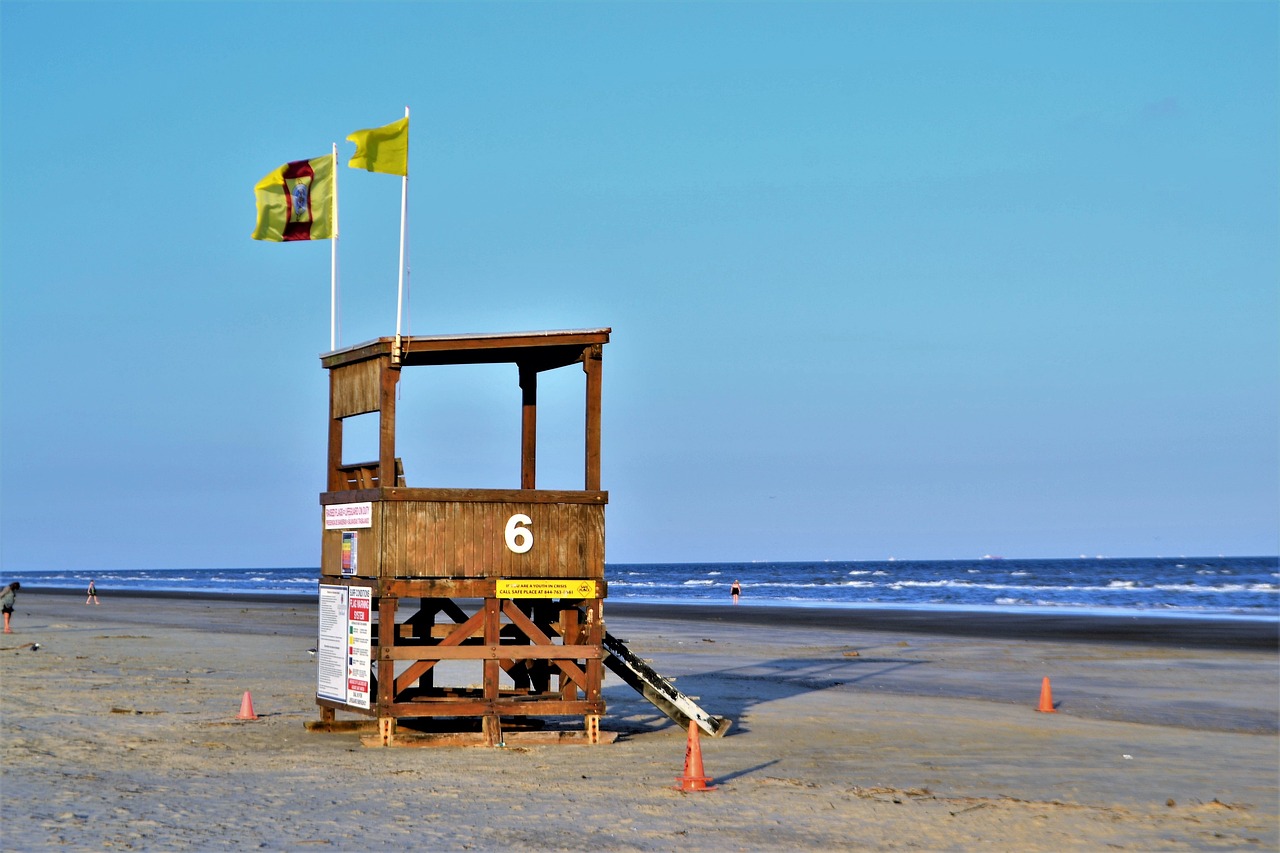In today’s world, knowing how to navigate and handle oneself in urban environments has become an essential skill. From unexpected emergencies to everyday challenges, being equipped with the right survival skills can make all the difference. In this article, we will explore the top survival skills specifically tailored for urban environments, ranging from basic first aid knowledge to self-defense techniques. Whether you find yourself in a bustling city or a quiet suburban neighborhood, these skills will empower you to confidently handle any situation that comes your way.

Navigation
Using maps and compasses
When navigating through an urban environment, it is essential to have a good sense of direction. One of the most effective tools for navigation is a map and compass. A map will provide you with a visual representation of the area, while a compass will help determine your direction. By studying the map, you can identify key landmarks and plan your route accordingly. The compass will ensure that you stay on track and avoid getting lost. Remember to orient the map properly based on your physical location and align it with the compass. This will help you accurately follow your planned route.
Navigating using landmarks
Another useful technique for navigation in an urban environment is using landmarks. Landmarks can be buildings, statues, or other distinctive features that can serve as reference points. By identifying and memorizing specific landmarks along your route, you can easily find your way around the city. For example, you can remember that you need to turn left at a particular statue and then continue straight until you reach a well-known building. This method can be particularly handy when navigating without a map or compass.
Using GPS devices
In today’s modern age, technology has made navigation even easier with the use of GPS devices. These devices rely on satellite signals to pinpoint your exact location and provide step-by-step directions to your desired destination. They can be especially helpful in complex urban environments with intricate road networks. By inputting your destination into the GPS device, it will guide you with clear instructions and voice prompts, ensuring that you stay on the right track. However, it is important to have a backup plan in case your GPS device malfunctions or loses signal.
Navigating in underground tunnels
Navigating in underground tunnels can be challenging, but with the right knowledge, it can be done safely. One way to navigate tunnels is by familiarizing yourself with the layout beforehand. If possible, study maps of the underground network or use apps that provide information on tunnel systems. Additionally, it is helpful to pay attention to signage or directions provided within the tunnels. This will give you an idea of which direction to go and which exits to take. In case of emergencies or unexpected situations, always remain calm and follow any instructions or guidelines provided by authorities.
Finding Shelter
Identifying safe buildings and structures
When seeking shelter in an urban environment, it is crucial to identify safe buildings and structures. Look for buildings that are structurally sound and not at risk of collapsing. Pay attention to any signs of damage, such as cracks in the walls or ceilings. Buildings made of sturdy materials like concrete or brick are generally more secure. Avoid buildings with broken windows or signs of recent vandalism, as they may pose safety risks or be frequented by other individuals seeking shelter. It is also advisable to find shelter on higher floors to minimize the risk of flooding or intruders.
Creating makeshift shelters
In situations where finding a safe building is not possible, creating makeshift shelters can provide temporary protection. Look for materials that can be used to construct a shelter, such as cardboard, tarps, or large pieces of cloth. Find a location that offers some level of cover, such as under bridges or in alleyways. Use the available materials to create a structure that will shield you from the elements. It is important to remember that makeshift shelters are not a long-term solution and should only be used temporarily until better shelter options become available.
Utilizing abandoned or vacant buildings
In some urban environments, there may be abandoned or vacant buildings that can be used as temporary shelter. Before entering any building, carefully assess its condition and stability. Look for signs of recent activity or other individuals occupying the space. If you decide to seek shelter in an abandoned building, be cautious of hazards such as broken glass, exposed wiring, or weak floors. Choose a room or area that provides the most privacy and security. Always be aware of your surroundings and have an exit plan in case of emergency.
Finding shelter in parks or wooded areas
Urban environments often have parks or wooded areas that can provide shelter in times of need. Look for areas with dense vegetation or trees that can offer protection from the elements. Seek out secluded spots where you will be less visible to others. It is important to be mindful of local regulations regarding overnight stays or camping in public areas. Avoid disturbing wildlife habitats and leave the area as you found it. Prioritize safety and security when choosing a location, ensuring that it is not prone to flooding or other natural dangers.

Water Procurement
Locating and accessing water sources
Finding a reliable source of water is essential for survival in any environment. In an urban setting, there are various potential water sources to consider. Look for public fountains, parks with water features, or other outdoor locations where water is readily accessible. Additionally, urban areas often have commercial establishments like restaurants or cafes that may be willing to provide water in cases of emergency. Be resourceful and ask for help if needed. It is important to remember that not all water sources are safe for consumption, so the next steps will focus on water purification.
Purifying water using filtration systems
When procuring water in an urban environment, it is crucial to purify it before consumption. One effective method is using filtration systems. Portable water filters or purifiers can remove harmful bacteria, parasites, and other contaminants from water sources. These devices usually have a filter that traps impurities as water passes through, providing you with clean water. Follow the manufacturer’s instructions on how to properly use and maintain the filtration system. It is also advisable to carry spare filters or purifying tablets as backup in case of equipment failure or depletion.
Collecting rainwater
Rainwater can be a valuable source of freshwater in an urban environment. When it rains, try to collect rainwater using containers such as buckets, barrels, or even plastic bags. Set up a collection system to capture as much rainwater as possible. Ensure that the containers or bags used for collection are clean and free from chemicals that could contaminate the water. It is important to cover the collected rainwater to prevent debris, insects, or other contaminants from entering. Remember to purify rainwater before consuming it, especially if the collection method involves rooftop runoff or other potentially contaminated surfaces.
Identifying safe sources of tap water
In urban environments, tap water can often be a reliable source of safe drinking water. However, it is important to identify safe sources of tap water during emergency situations. Public facilities like schools, hospitals, or government buildings may have functioning taps with potable water. Look for outdoor water faucets or spigots that are connected to the main water supply. It is important to ensure that the water being collected is not contaminated by testing it with purification methods or water testing kits if available. If no other options are available, remember that boiling tap water for at least one minute can effectively kill most harmful bacteria and parasites.
Food Acquisition
Foraging for edible plants
In an urban environment, foraging for edible plants can be a valuable skill for obtaining food. Look for green spaces or parks that have a variety of plants. Learn to identify edible plants and differentiate them from poisonous ones. Common urban edible plants may include dandelion greens, wild berries, or certain types of mushrooms. It is advisable to use a field guide or consult knowledgeable individuals to ensure accurate identification. Remember to only harvest plants that are plentiful and leave enough for the ecosystem to thrive. Be cautious of plants growing near roadsides or contaminated areas, as they may have absorbed harmful pollutants.
Hunting small game
While hunting for large game may be impractical in an urban environment, there are opportunities to hunt smaller animals for sustenance. Rats, pigeons, squirrels, and rabbits are examples of animals that may be present in urban areas. It is essential to familiarize yourself with local laws and regulations regarding hunting or trapping animals in urban settings. If hunting is permitted, acquire the necessary knowledge and skills to safely and humanely capture or kill animals. Remember to prioritize self-preservation and consider alternative food sources if hunting is not possible or legal.
Fishing in urban waterways
Urban environments often have bodies of water such as rivers, lakes, or ponds that may contain fish. Fishing can provide a valuable source of protein and nutrients. Research local fishing regulations to ensure compliance with any licensing or permit requirements. Invest in a compact fishing kit that includes a fishing rod, hooks, and line. Find suitable fishing spots along the waterway and learn about the types of fish that can be found in the area. Be mindful of any pollution or contamination risks associated with urban waterways, as fish from these areas may not be safe for consumption.
Scavenging for non-perishable food items
In urban environments, opportunities for scavenging non-perishable food items may arise. Look for abandoned buildings, dumpsters, or even retail establishments that may have discarded or unused food. Pay attention to expiration dates, signs of spoilage, or damaged packaging when scavenging for food. Non-perishable items such as canned goods, dry pasta, rice, or granola bars can often be found. Ensure that these items are safe for consumption before eating them. Remember to only take what you need and avoid wastefulness to maximize the available resources for survival.

First Aid and Medical Skills
Basic first aid techniques
Having basic first aid knowledge can be crucial in an urban survival situation. Learn how to perform cardiopulmonary resuscitation (CPR), control bleeding, and administer basic wound care. Knowing how to recognize and respond to common medical emergencies such as heart attacks, strokes, or allergic reactions can potentially save lives. Keep a basic first aid kit with essential supplies like bandages, antiseptic wipes, gloves, and pain relievers. Familiarize yourself with the contents of the kit and understand how to use them effectively. Practice these skills regularly to maintain proficiency.
CPR and rescue breathing
Cardiopulmonary resuscitation (CPR) and rescue breathing are essential life-saving techniques that should be learned by everyone. CPR involves chest compressions and rescue breathing, which help maintain blood flow and oxygen supply to the body during cardiac arrest. Enroll in a certified CPR course to learn the proper techniques and receive hands-on training. Regular practice is important to maintain proficiency in performing CPR effectively. Being able to confidently administer CPR can greatly increase the chances of survival for individuals in need.
Treating common injuries and illnesses
In an urban environment, it is important to be prepared to treat common injuries and illnesses. Learn how to effectively clean and dress wounds to prevent infection. Familiarize yourself with symptoms and treatment methods for common ailments like sprains, fractures, burns, and insect bites. It is also useful to have knowledge of basic medication administration and dosage to address pain or fever. Include essential over-the-counter medications such as pain relievers, antihistamines, and antidiarrheals in your first aid kit. Stay updated on any local health advisories or available medical resources.
Administering medication and emergency interventions
In a survival situation, individuals with pre-existing medical conditions may require ongoing medication or emergency interventions. If you or someone in your group relies on specific medications, ensure a sufficient supply is stockpiled or accessible. Develop a system to manage and distribute medications effectively. Be knowledgeable about the proper administration of medications and any potential side effects or interactions. In emergency situations, understanding how to respond to allergic reactions, anaphylaxis, or asthma attacks can be life-saving. Consider enrolling in medical training courses specific to emergency interventions, such as administering epinephrine auto-injectors or asthma inhalers.
Self-Defense
Basic self-defense techniques
In urban survival situations, knowing basic self-defense techniques can help protect yourself from potential threats. Enroll in self-defense classes to learn how to defend against common types of attacks. Techniques such as proper stance, blocking, striking, and escaping can be invaluable in dangerous situations. Practice these skills regularly to build muscle memory and increase your confidence. Remember that the goal of self-defense is to escape and stay safe, so focusing on evasion and de-escalation strategies is important.
Carrying and using personal safety devices
Carrying and knowing how to use personal safety devices is an important aspect of urban survival. Pepper spray or personal alarms are non-lethal options that can help deter attackers and create an opportunity for escape. Learn the proper way to handle and use such devices to maximize their effectiveness. Keep them easily accessible, but be mindful of local laws and regulations regarding their possession and use. Always prioritize personal safety and consider professional advice or training in the use of more advanced self-defense tools.
Awareness and avoidance strategies
Staying aware of your surroundings and potential threats is vital in urban survival situations. Practice situational awareness by regularly scanning the environment and identifying any suspicious behavior or potential dangers. Trust your instincts and proactively avoid risky situations. Being aware of unlit areas, blind corners, or secluded spots can help you make informed decisions about where to walk or seek shelter. Traveling in groups or well-lit areas whenever possible can also discourage potential attackers.
Building self-confidence and assertiveness
Having self-confidence and assertiveness can be beneficial in urban survival situations. Cultivate a strong mindset and believe in your ability to handle challenging circumstances. Developing self-confidence can help deter potential attackers who may target individuals they perceive as vulnerable. Assertiveness, coupled with effective communication skills, can also be helpful when dealing with others in stressful or potentially dangerous situations. Practice setting personal boundaries and assertively stating your needs or intentions without aggression.

Fire Starting
Creating fire using flint and steel
Fire is essential for warmth, cooking, and signaling in a survival situation. Flint and steel are traditional fire-starting tools that can be used in urban environments. By striking a flint against a piece of steel, sparks are created that can ignite tinder and start a fire. Prepare a small fire kit with dry tinder such as cotton balls, dried grass, or char cloth. Practice the technique of creating sparks and transferring them onto the tinder to create a flame. Remember to start fires in a safe location, away from flammable materials or structures.
Utilizing urban materials as fire starters
In an urban environment, there are various materials that can be repurposed as fire starters. Items such as newspaper, cardboard, or lint from clothing can serve as effective tinder. Gather dry materials from urban debris or recycling bins that can catch fire easily. Be resourceful and explore innovative ways to use everyday objects as fire-starting materials. However, always prioritize safety and ensure that the materials you gather are free from hazardous chemicals or substances that could produce toxic smoke when burned.
Building and maintaining a fire in urban environments
Building and maintaining a fire in an urban environment requires caution and consideration for safety. Use a fire pit or fire-safe container to contain the fire and prevent it from spreading. Look for areas where fires can be built without posing a risk to nearby structures or vegetation. Pay attention to wind patterns and ensure that the fire is not easily visible or detectable from a distance. When extinguishing the fire, use water or dirt to fully douse the flames and prevent any chance of reignition. Always leave no trace and clean up after yourself to minimize any potential negative impact on the environment.
Safety precautions when building fires
When building fires in urban environments, safety should always be a top priority. Keep a fire extinguisher or water source nearby to quickly extinguish any accidental or uncontrolled fires. Clear the area around the fire of any flammable materials, including leaves, debris, or garbage. Ensure that the fire is attended at all times and never left unattended. It is important to follow any local regulations or restrictions on open fires and use common sense to prevent any accidental fires that could endanger yourself or others.
Emergency Communication
Using mobile phones and radio signals
In urban environments, mobile phones and access to radio signals can be valuable for emergency communication. Keep your mobile phone charged and have a backup battery or portable charger. Familiarize yourself with emergency numbers and local communication channels. In case of a disaster, use your mobile phone to call for help or receive emergency alerts and updates. Additionally, handheld radios or scanners can be used to listen for emergency broadcasts or communicate with others in a limited range. Ensure that you have spare batteries or alternative power sources for any communication devices.
Creating and using improvised communication devices
In situations where traditional communication methods may be unavailable, improvising communication devices can help you connect with others. Look for materials that can be used to create simple communication devices such as tin-can telephones, signal flares, or rudimentary Morse code systems. Be creative and resourceful with the available materials, but remember that these improvised devices may have limited effectiveness. It is important to understand that communication in emergency situations should prioritize essential information and be used sparingly to conserve power and resources.
Locating and utilizing public communication centers
Urban environments often have designated public communication centers that can provide crucial information and assistance in emergency situations. These centers may include police stations, fire stations, community centers, or government buildings. Familiarize yourself with their locations and any procedures for accessing their services. During emergencies, these centers may serve as centralized communication hubs, providing updated information, emergency services, or even charging stations for electronic devices. Utilize these resources in a responsible and considerate manner, ensuring that priority is given to those in immediate need.
Using social media and online platforms for communication
In today’s interconnected world, social media and online platforms can be powerful tools for emergency communication. When traditional communication methods may be overwhelmed or unavailable, these platforms can provide a means to reach out to friends, family, or emergency services. Use social media accounts or messaging apps to update your status and indicate your safety. Share relevant information or seek assistance from online communities or neighborhood groups. However, be aware of the potential limitations of these platforms during emergencies, such as limited connectivity or bandwidth constraints. Use them as a complement to other communication methods rather than relying solely on them.

Coping with Psychological Stress
Maintaining a positive mindset
Coping with psychological stress is crucial during urban survival situations. Maintaining a positive mindset can help you overcome challenges and maintain resilience. Focus on positive aspects of the situation, such as finding solutions, learning new skills, or connecting with others. Practice gratitude and remind yourself of what you are grateful for. Engage in activities that bring you joy or help distract from negative thoughts. Surround yourself with positive influences and supportive individuals who can provide emotional support.
Practicing relaxation and mindfulness techniques
During stressful times, practicing relaxation and mindfulness techniques can help reduce anxiety and promote mental well-being. Deep breathing exercises, meditation, or yoga can help calm the mind and relax the body. Find a quiet space, even in an urban environment, where you can sit or lie down comfortably. Focus on your breathing and let go of any intrusive thoughts. Engaging in these practices regularly can improve your ability to cope with stress, enhance mental clarity, and increase overall resilience.
Seeking support from others
Seeking support from others is vital in urban survival situations. Reach out to trusted friends, family, or neighbors for emotional support, collaboration, and shared resources. Establish a support network or community where you can lean on each other during challenging times. Engage in open and honest communication, sharing your concerns or feelings with others who can provide empathetic support. Remember that you are not alone and that seeking help is a sign of strength.
Developing resilience and adaptability
Developing resilience and adaptability is crucial when facing the challenges of urban survival. Learn from each experience, whether it be success or setbacks. Adapt to changing circumstances and be flexible in your approach. Embrace a growth mindset, believing in your ability to learn and navigate new situations. View challenges as opportunities for growth and constantly strive to improve your survival skills. Developing resilience and adaptability will equip you with the strength to overcome adversity and increase your chances of survival in urban environments.
Gathering and Using Tools
Identifying and acquiring essential tools for survival
Gathering the right tools for survival in an urban environment is essential. Identify the essential tools that can help you with navigation, shelter construction, water procurement, fire starting, and other survival needs. These may include multi-tools, knives, compasses, fire starters, portable water filters, flashlights, and communication devices. Prioritize durable and compact tools that are lightweight and easy to carry. Invest in quality products that can withstand the demands of an urban survival situation. Regularly check and maintain your tools to ensure they are in good working condition.
Using everyday objects as tools
In an urban survival scenario, everyday objects can be repurposed as tools to meet your needs. Look for items that can serve multiple functions and be utilized in creative ways. For example, a sturdy can opener can open cans of food and also double as a makeshift cutting tool. A bicycle chain or wire can be used for shelter construction or securing items. Be resourceful and think outside the box when identifying potential tools within your environment. However, always prioritize safety and use caution when repurposing objects to avoid injury or damage.
Repairing and modifying tools
In an urban survival situation, the ability to repair and modify tools can be invaluable. By understanding the basic principles of tool construction and mechanics, you can troubleshoot and fix issues that may arise. Learn how to sharpen blades, replace broken parts, or reinforce weakened handles. Adapt existing tools to better suit your needs by adding or removing components. Acquire the necessary tools and materials for repairs and modifications, such as screwdrivers, files, epoxy, or duct tape. Being able to maintain and customize your tools will ensure their longevity and effectiveness.
Improvising tools for specific tasks
In situations where specific tools may be unavailable, the ability to improvise can be a valuable skill. Look for alternative materials or objects that can serve as substitutes for specialized tools. For example, a flathead screwdriver can be fashioned from a sturdy piece of metal, or a hollow tube can function as a makeshift straw or blowgun. Be creative and resourceful when faced with tasks that require a certain tool. However, always prioritize safety and assess the risks associated with using improvised tools. Use caution and common sense to avoid accidents or injury.
Conclusion
Surviving in urban environments requires a unique set of skills and resourcefulness. By mastering the skills outlined in this article, you will be better equipped to navigate, find shelter, procure water and food, provide first aid, defend yourself if necessary, start fires, communicate during emergencies, manage psychological stress, and effectively use tools. Remember, practice and preparation are key to developing proficiency in these survival skills. Stay proactive, maintain a positive mindset, and adapt to evolving circumstances. With these skills and the right mindset, you can increase your chances of surviving and thriving in urban environments.
